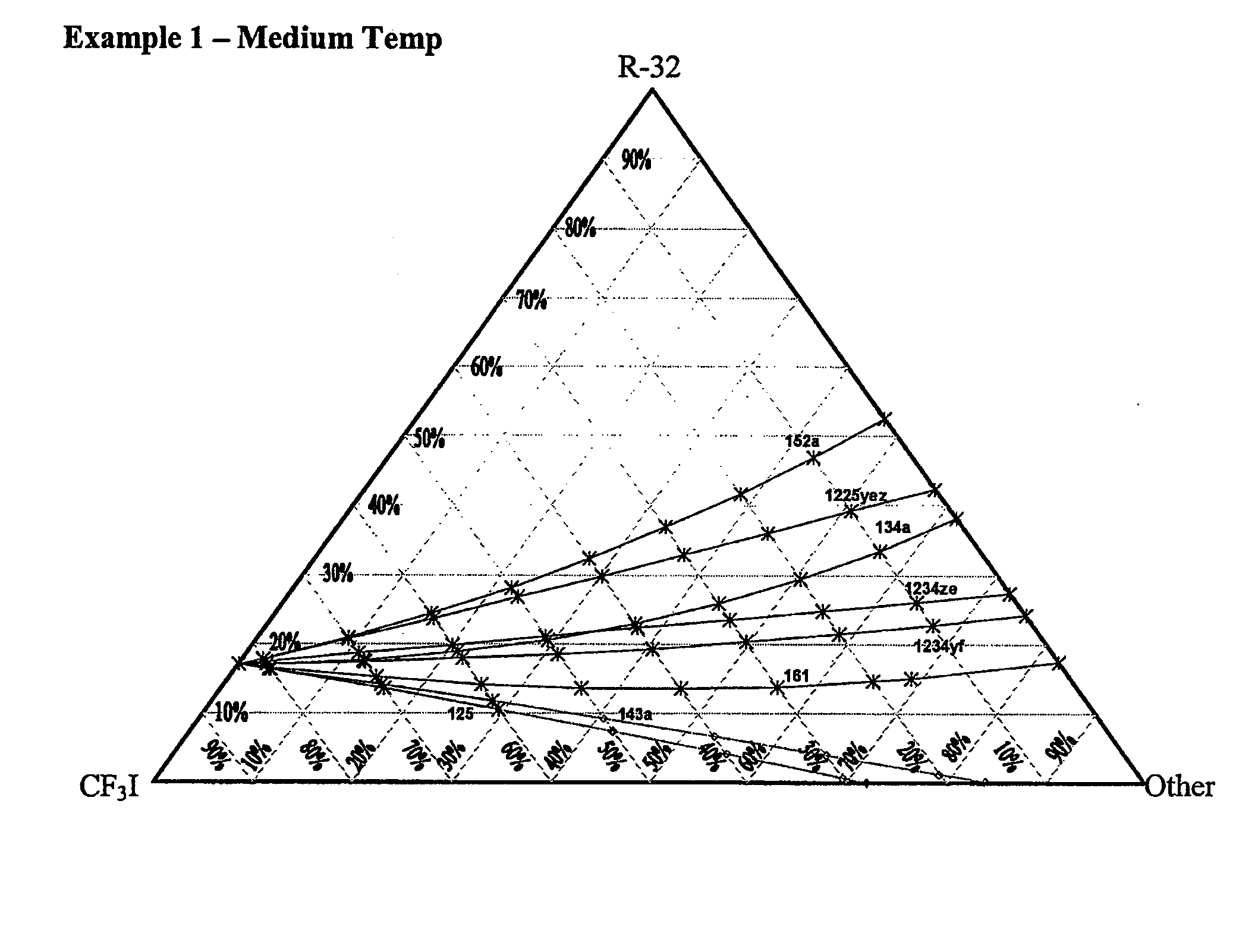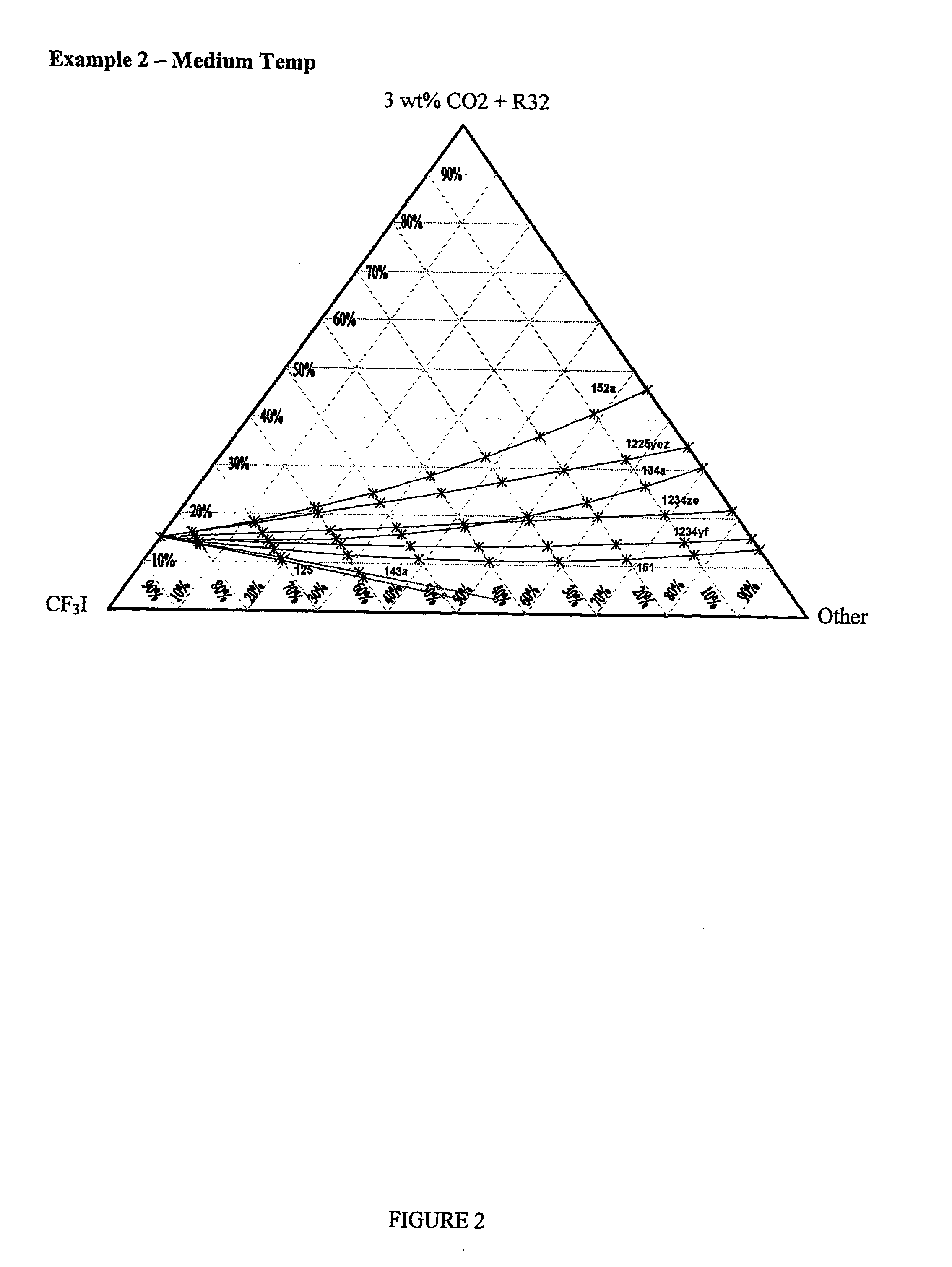Compositions containing fluorine substituted olefins
a technology of substituted olefins and compositions, applied in the field of compositions, can solve the problems of chlorine-based compounds, use of chlorine-containing compositions, damage to the earth's atmosphere, etc., and achieve the effect of reducing the flammability of compositions
- Summary
- Abstract
- Description
- Claims
- Application Information
AI Technical Summary
Benefits of technology
Problems solved by technology
Method used
Image
Examples
example 1
Medium Temperature System with HFC-32 and CF3I
[0057]The capacity of a heat transfer composition (and a refrigerant in particular) represents the cooling or heating capacity and provides some measure of the capability of a compressor to pump quantities of heat for a given volumetric flow rate of refrigerant. In other words, given a specific compressor, a refrigerant with a higher capacity will deliver more cooling or heating power.
[0058]A refrigeration / air conditioning cycle system is simulated or provided with a condenser temperature is about 40° C., an evaporator temperature of about 2° C., a superheat of about 10° C., and a sub-cool temperature of about 5° C., and a compressor efficiency of 0.7, which would normally be considered typical “medium temperature” conditions. Several compositions of the present invention are simulated and / or tested based on a first component consisting of HFC-32, a second component consisting of CF3I and one of a series of third components as described ...
example 2
Medium Temperature System with HFC-32 / CO2 and CF3I
[0059]Example 1 is repeated except that the first component of the heat transfer composition consists of 3 percent by weight of CO2 and 97 percent by weight of HFC-32 and that the refrigerant whose capacity is to be matched is R-410A. The chart in FIG. 2 is developed and analyzed to identify compositions which fall on or about the curves and for which GWP is less than about 1000. This identification is preferably preceded or followed by an analysis of the flammability of the compositions, and then a selection is made of a composition to use as an original component of such system or as a replacement or retrofit to such an existing system.
example 3
Medium Temperature System with HFC-32 / CO2 and CF3I
[0060]Example 1 is repeated except that the first component of the heat transfer composition consists of 1 percent by weight of CO2 and 99 percent by weight of HFC-32 and that the refrigerant whose capacity is to be matched is R-410A. The chart in FIG. 3 is developed and analyzed to identify compositions which fall on or about the curves and for which GWP is less than about 1000. This identification is preferably preceded or followed by an analysis of the flammability of the compositions, and then a selection is made of a composition to use as an original component of such system or as a replacement or retrofit to such an existing system.
PUM
 Login to View More
Login to View More Abstract
Description
Claims
Application Information
 Login to View More
Login to View More - R&D
- Intellectual Property
- Life Sciences
- Materials
- Tech Scout
- Unparalleled Data Quality
- Higher Quality Content
- 60% Fewer Hallucinations
Browse by: Latest US Patents, China's latest patents, Technical Efficacy Thesaurus, Application Domain, Technology Topic, Popular Technical Reports.
© 2025 PatSnap. All rights reserved.Legal|Privacy policy|Modern Slavery Act Transparency Statement|Sitemap|About US| Contact US: help@patsnap.com



